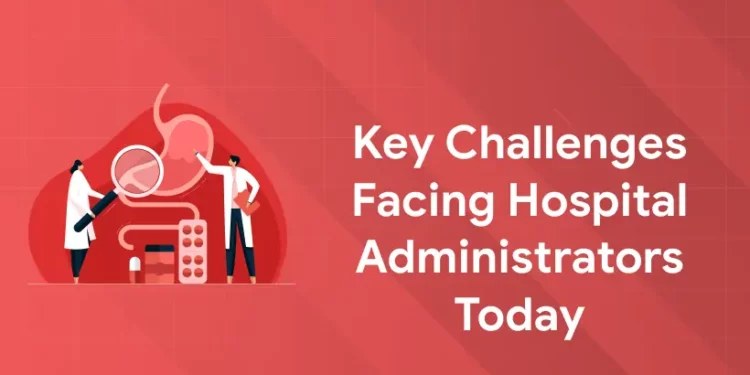Table of Contents
Healthcare is no longer limited to treating people. The last ten years have seen a tremendous evolution of this industry. Healthcare administrators have had to step up to meet the challenges posed by unexpected events like the COVID-19 epidemic and constantly shifting government laws. The change in patient expectations and the rapidly evolving state of technology developments are added to these. In this article, we look at major challenges faced by hospital administrators today.
Join Entri’s Hospital and Healthcare Administrator Course
Challenges Facing Hospital Administrators
Changes in healthcare regulations
The healthcare system has faced difficulties in the past, but the nature of such difficulties varies based on the operational environment. In certain areas, tough economic times lead to an increase in patients applying for Medicare and Medicaid. Healthcare administrators need to figure out how to maintain solvency in the face of poor payment rates while still provide healthcare services.
The rising cost of healthcare
A number of external reasons, including as government policies, inflation, and an ageing population, are contributing to the rise in healthcare expenditures. These variables also frequently place financial burden on hospitals and clinics, making it more difficult for them to make the kind of investments that are required in infrastructure, equipment, and resources. People’s healthcare needs are growing along with the population and their length of life, and the kinds of treatment they require are typically resource-intensive, which drives up demand and raises expenses.
Patient Safety
Any sector, including healthcare, will eventually evolve to bring with it both new risks and advantages. Certain dangers are directly related to new organisational structures and technological advancements. Additional hazards arise from the very raising of standards brought about by innovation, as companies and clinical teams find it difficult to adjust to the new norms. For example, following surgery, patients are being released from the hospital earlier. While there is no denying the benefits, there are also new risks involved. More adverse events are already caused by mistakes in non-operative management and post-operative care than by mistakes in surgical procedure.
Staffing Challenges
Even before the COVID-19 pandemic struck, our healthcare system was in severe need of frontline professionals (particularly nurses). The pandemic has made already serious staffing issues worse, in part because of demanding work schedules, lengthy workdays, compassion fatigue, and burnout among nurses. Effective hospital administrators understand that their team is the foundation of their facility and that patient care would not be feasible without them. A healthcare administrator’s responsibility is to see to it that the personal and professional requirements of their staff members are satisfied.
Secure Your Future in Hospital and Healthcare Administration – Enroll Now!
Financial Management
Financial issues were the top concern for hospital CEOs. Many highlight the growing expense of healthcare as a result of increased prescription and insurance costs. But the average clinic or hospital has far more serious financial difficulties than that.
The range of issues includes handling medical billing, negotiating payments, and denials, in addition to unifying finances across several healthcare facilities. Strong money management is essential. A digital transformation will be necessary for the majority of healthcare providers because the amount of complexity involved would be too great to handle by hand.
The increasing demand for services is putting pressure on many to scale up and expand operations, which further complicates their financial management. One hospital’s period-end report can be completed more easily than the financial statements of several healthcare facilities combined.
Adequate security and privacy for sensitive data
Security is becoming a major worry for many healthcare professionals. It is worthwhile to invest in systems and solutions that offer cutting-edge security features that safeguard your personal information as well as the information of your patients if you want to safeguard the financial stability of your business as it expands and grows. Every accounting operation should be conducted in a highly secure setting with data storage and threat protection.
Implementing ongoing monitoring and keeping up with the most recent security protocols are also essential. Our defences should change along with the latest cyberthreats. Additional security layers for protecting sensitive data can be added by utilising multi-factor authentication and strong encryption technologies. Healthcare providers can strengthen their defences against potential breaches and guarantee the integrity of their data by taking a proactive approach to security.
Conclusion
The healthcare sector is evolving quickly, and new difficulties appear on a daily basis. However, this expansion is not without its difficulties. Finding innovative approaches to enhance patient outcomes, save expenses, and boost organisational productivity is critical for healthcare administrators. The healthcare industry’s future will be shaped by overcoming these obstacles and becoming a more sustainable one.
Join Entri’s Hospital and Healthcare Administrator Course
Frequently Asked Questions
1: What is the primary role of a hospital administrator?
What is the main challenge in healthcare the coming decade?
Workforce supply issues are projected to persist as demand increases. Over the last ten years, the expansion of the workforce has not kept pace with the growing demands placed on the healthcare administration.
What are the challenges of medical directors?
Managing human resources, clinical governance, clinical privileging, and increasing cost-efficiency are some of the organisational problems.
What is risk in healthcare management?
A sophisticated collection of clinical and administrative systems, processes, procedures, and reporting frameworks known as risk management is used in the healthcare industry to identify, track, evaluate, reduce, and eliminate patient hazards.










